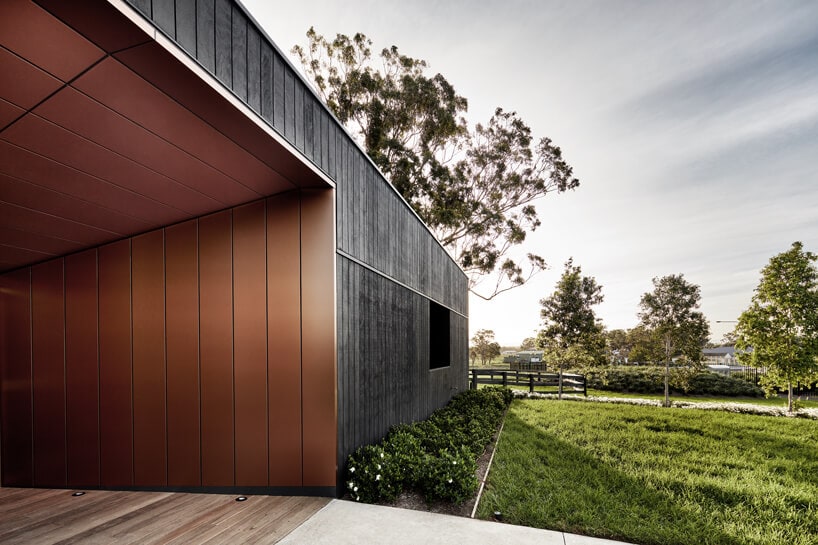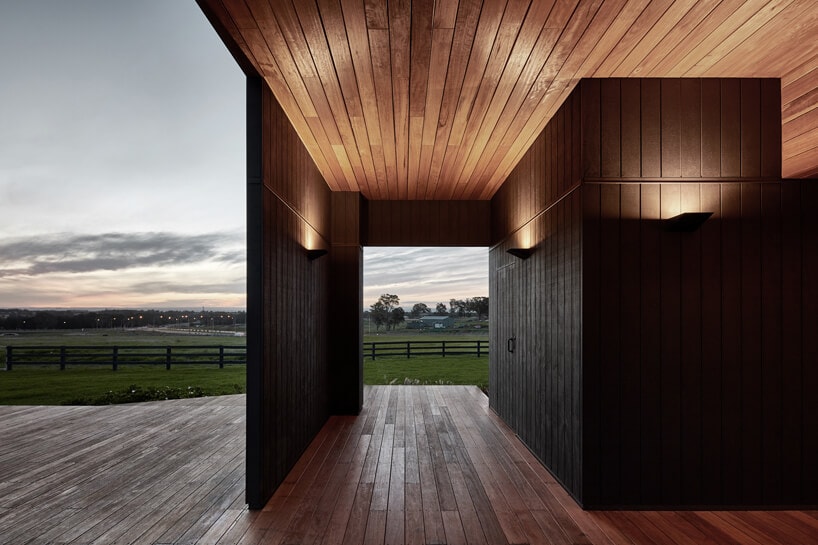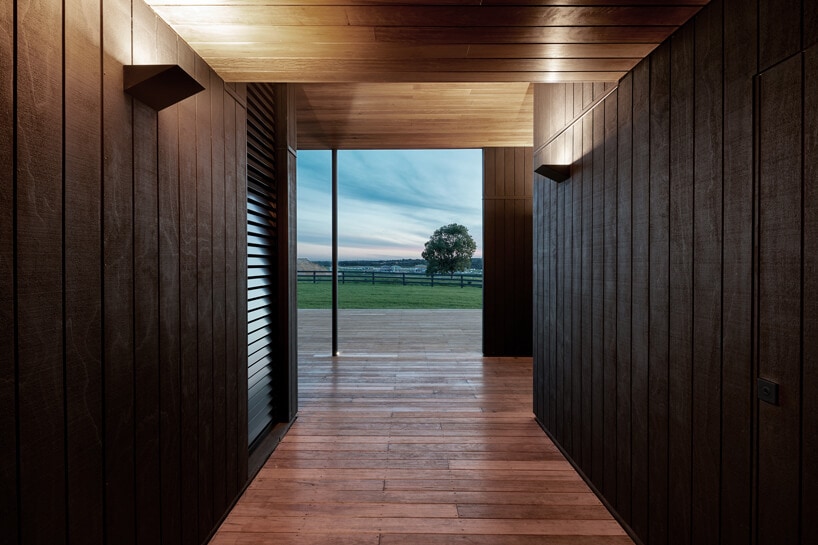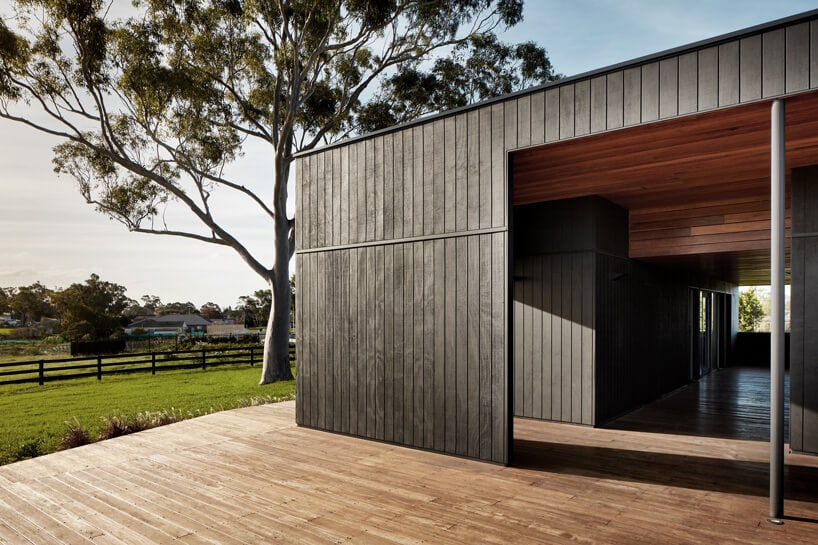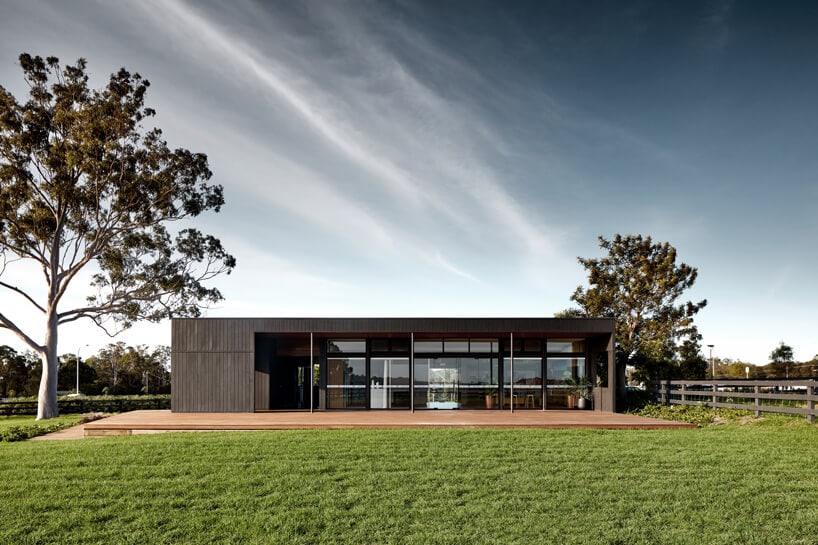Most property sales offices are structures that sit alone uncomfortably, on large tracts of property: prosaic temporary and utilitarian beasts, there to serve no longer, and a purpose. Sydney based architectural practice, THOSE architects, create the exact opposite in this single-story building, and Stockland attracts a buyer to the rural website.
Conceived as a ‘building in a landscape’ it is a tactile piece of architecture in its own right: a construction that’s unique to its location, designed to heighten the customer’s experience of that place and convey a feeling of the community that will eventually reside there. And unlike most sales and site offices, it’s a longer life: once the new residents move in, it will stay as a cafe and meeting place.
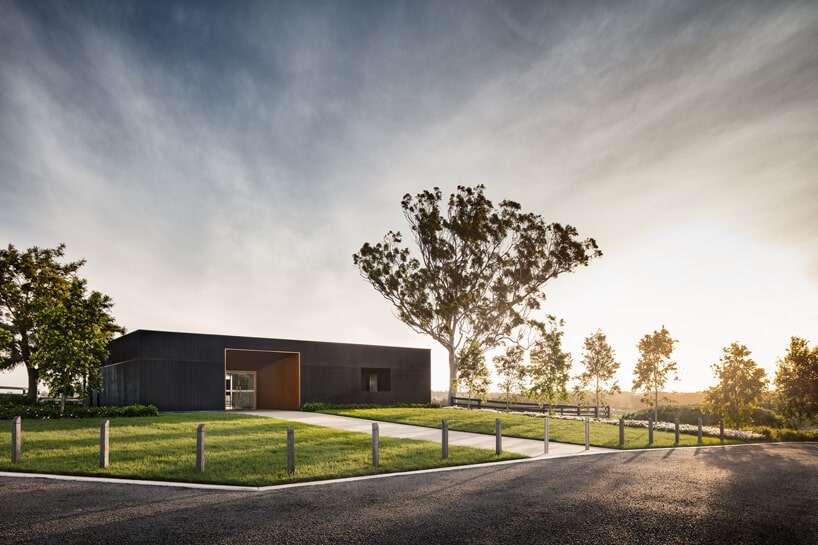
The building features stained, wooden walls that are black on the exterior with surfaces that frame the entrance.
“We see this as a different work of architecture, designed to inform the potential purchaser about the area where they may reside, and how it might feel to live there,” said Ben Mitchell, director of THOSE architects. “it’s all about the design. So, for example, unlike many sales offices, it doesn’t have any signage, and is carefully calibrated to convey an experience of its place.”
THOSE architects’ brief was to achieve this on a super-shoestring budget, so they focused on finding ways to utilize modest materials powerfully, to enhance the experience of what it feels like to be in this lush, flat former dairy pasture landscape. To create moments of tension and relief, camouflage, and revelation, intimacy interspersed with long 31, the flow sequence through and around the building is carefully curated.
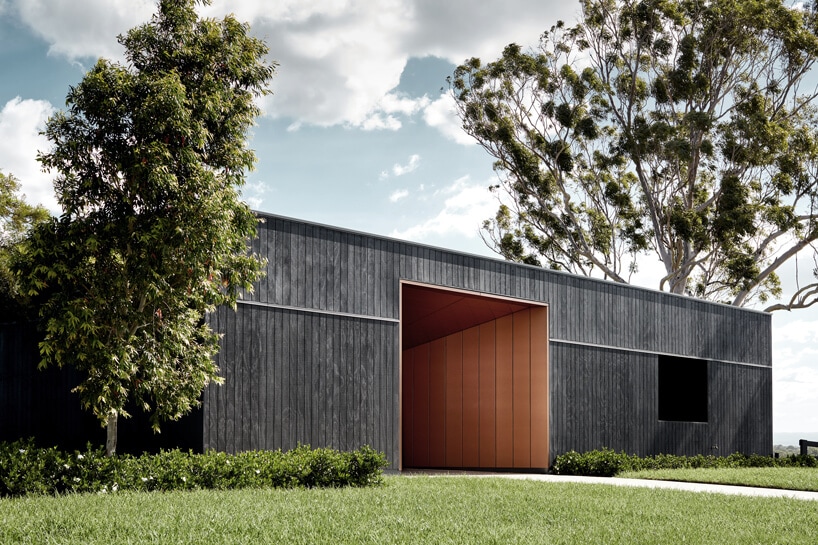
Located in the rear of the building, there is a glass wall that was recessed sheltered under the roof.
Together with the primary view from the building located to the south-west (over dairyland into the blue hills outside) the building is approached from the south-east via a honed concrete ramp which intersects lush pasture. An imposing timber wall is punctuated by two openings, one of which is lined with copper cladding to define the entry point.
